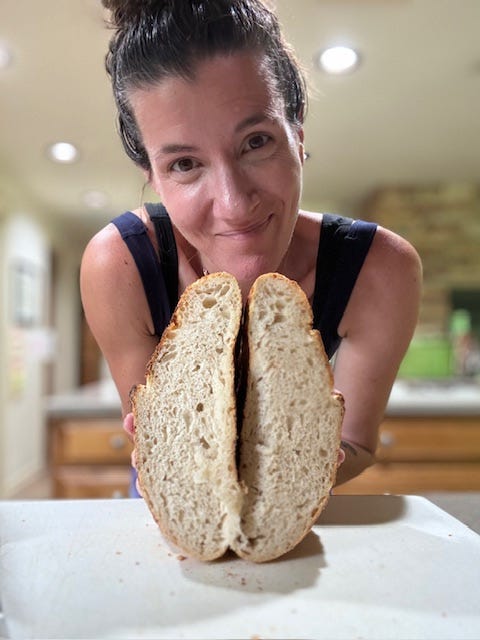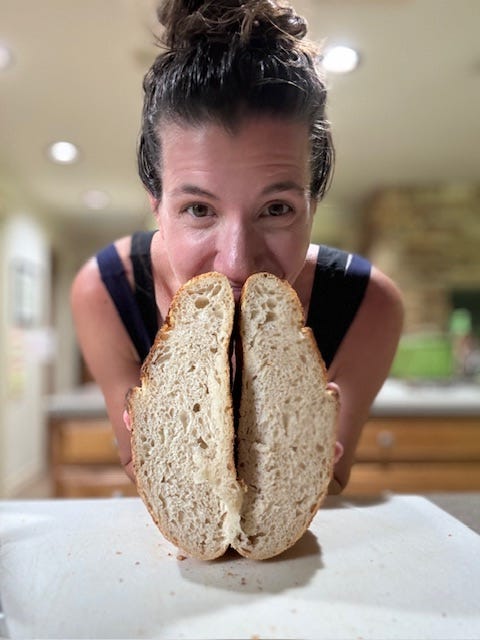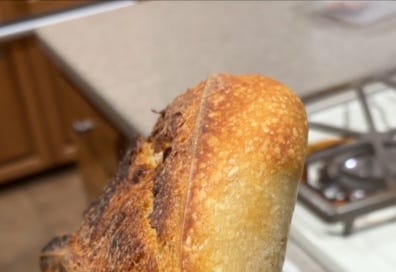

A dense and gummy sourdough loaf is often a result of under or over fermentation. Meaning, you didn’t let the dough rest long enough at room temperature or you let it rest too long prior to shaping it.
But that’s not the only reason you could be seeing a gummy loaf of sourdough bread.
Here’s a breakdown of some common causes + their solutions:
Under Fermentation: as stated above, this is the most common cause. So many new bakers get impatient when making sourdough and they often expect the process to go faster. But that’s just one of the reasons I love sourdough - it’s a slow process that forces you to be patient. If you don’t allow the dough to rise for a sufficient amount of time, it can lead to a dense, gummy crumb.
Solution: simple, just increase the fermentation time. Watch for signs that the bulk fermentation is complete - increased by 50%, jiggly, bubbles.
Over Fermentation: unlike under fermentation, with over fermentation you leave the dough to ferment at room temperature for too long. This gives the dough a weak structure and it collapses easily.
Solution: prep your dough on a day when you know you’ll be home to watch it and learn how long it takes your dough to ferment - you can do this by watching for signs like: your dough increasing by 50%, dough becoming jiggly and less tacky.
Immature/Inactive/Weak Starter: another common beginner baker error since a lot of new bakers want instant gratification! Unfortunately, an inactive or weak starter will not produce enough gas to help the dough rise, resulting in a dense loaf. So as with all things sourdough related, you have to be patient with your sourdough starter (especially if it’s one you just made!).
Solution: ensure your starter is at least a few weeks old, its active and it’s consistently doubling in size after being fed.
Under Baking: not baking your loaf long enough or at a high enough temperature.
Solution: bake longer and at a higher temperature.
Slicing into it while it’s still too hot: Who doesn’t want a warm piece of homemade bread?!
Solution: I know it’s so hard, but avoid slicing into it until it’s had time to cool. Trust me, I’ve tested it and it really does cause the dough to be gummy!
Insufficient gluten development: under developed gluten can lead to a gummy loaf.
Solution: be sure to perform enough stretch and folds to develop the gluten.
I’ve had my fair share of dense loaves, but I’ve learned so much about the sourdough process over the last few years and I can honestly say that I haven’t had one in awhile.
Hope these tips help! Happy Baking!
Xx -Mandy
Later this week for paid subscribers, I’ll be sharing the recipe for my customers new favorite menu item: Sourdough Strawberry Poptart Struedels! You don’t want to miss it.





